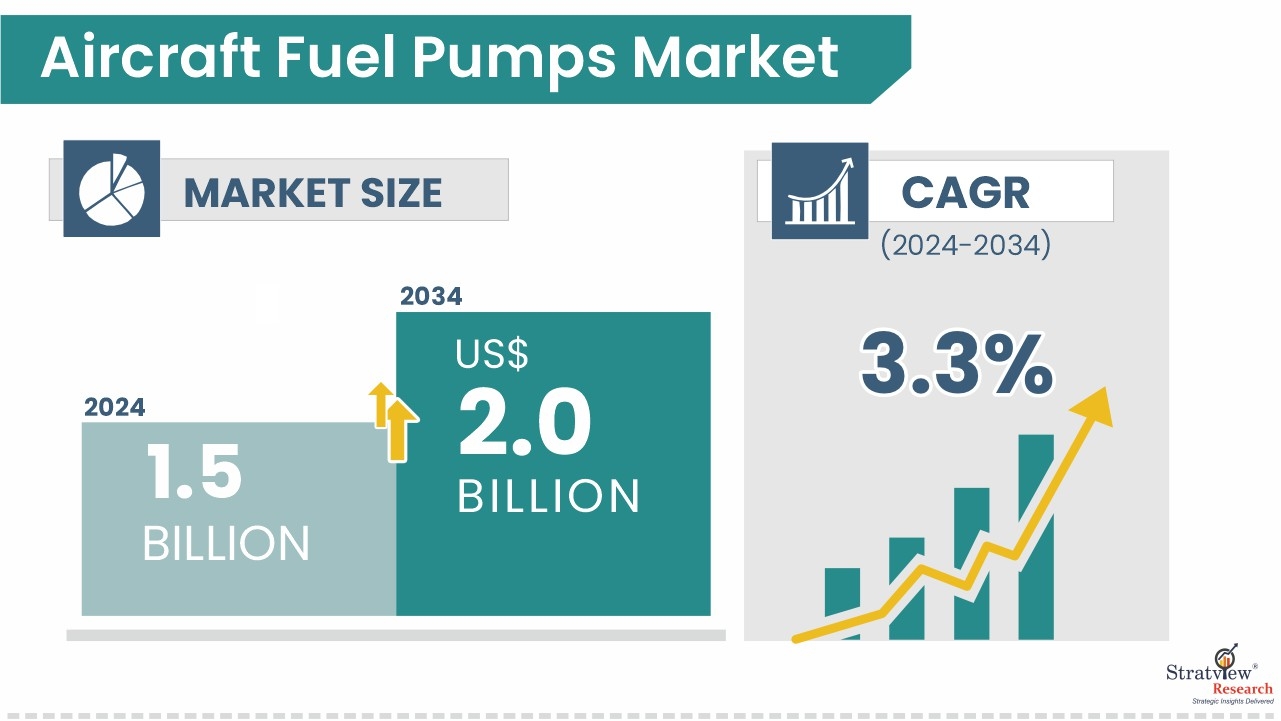Aircraft Fuel Pumps Market: Meeting the Demands of Next-Generation Aviation

The global aviation sector is undergoing a period of transformation, marked by surging passenger traffic, defense modernization, and sustainability imperatives. At the heart of these changes lies the aircraft fuel pump, a key component ensuring continuous and reliable fuel supply to engines under all flight conditions. As both legacy fleets and next-generation aircraft demand more efficient systems, the aircraft fuel pumps market is experiencing accelerated momentum.
According to Stratview Research, the aircraft fuel pumps market was estimated at USD 1.5 billion in 2024 and is likely to grow at a CAGR of 3.3% during 2025-2034 to reach USD 2.0 billion in 2034.
Request Sample Page Now:
https://www.stratviewresearch.com/Request-Sample/3997/aircraft-fuel-pumps-market.html#form
Market Drivers
One of the strongest market drivers is fleet modernization and replacement cycles. Airlines are retiring older, less fuel-efficient aircraft in favor of new-generation models equipped with advanced engines and fuel systems. This transition fuels demand for modern, high-performance fuel pumps.
Rising defense budgets are another driver. Fighter jets, military helicopters, and transport aircraft all require specialized pumps designed for high-performance and combat conditions. Ongoing geopolitical tensions are encouraging many nations to invest in robust fuel systems that enhance aircraft mission readiness.
Additionally, the emphasis on lightweighting and efficiency is shaping innovation. Fuel pump manufacturers are adopting advanced materials and compact designs to reduce overall weight, helping airlines lower fuel consumption and meet sustainability targets.
The aftermarket sector is also a significant driver. Airlines and operators require frequent inspection and replacement of pumps to comply with airworthiness standards. With global fleets expected to expand substantially by 2032, the aftermarket segment will generate recurring demand.
Challenges
The market, however, faces challenges. Technological complexity is one major issue, as pumps must perform flawlessly under varying altitudes, pressures, and fuel types. Designing such systems involves significant R&D investment, which increases overall costs.
Certification and regulatory compliance are another barrier. Aviation authorities impose strict approval standards for fuel systems, which lengthen product development cycles and delay market entry.
Environmental shifts present additional challenges. With the aviation industry exploring sustainable aviation fuels (SAFs) and hybrid propulsion, fuel pumps must adapt to new chemical properties and operating conditions. This requires redesigns and extensive testing, adding to manufacturers’ workloads.
Lastly, the global supply chain remains fragile, as disruptions in high-precision components can delay aircraft manufacturing and MRO operations.
Conclusion
The aircraft fuel pumps market stands at the intersection of aviation growth and technological innovation. While complexity, certification hurdles, and cost remain challenges, the long-term outlook is promising. The combination of commercial fleet expansion, defense modernization, and the shift toward more-electric and sustainable aircraft ensures steady demand. As aviation moves toward the next era of efficiency and environmental responsibility, fuel pump technologies will remain central to enabling safe, reliable, and future-ready flight operations.
- Questions and Answers
- Opinion
- Motivational and Inspiring Story
- Technology
- True & Inspiring Quotes
- Live and Let live
- Focus
- Geopolitics
- Military-Arms/Equipment
- Beveiliging
- Economy/Economic
- Art
- Causes
- Crafts
- Dance
- Drinks
- Film/Movie
- Fitness
- Food
- Spellen
- Gardening
- Health
- Home
- Literature
- Music
- Networking
- Other
- Party
- Religion
- Shopping
- Sports
- Theater
- Health and Wellness
- News
- Culture

